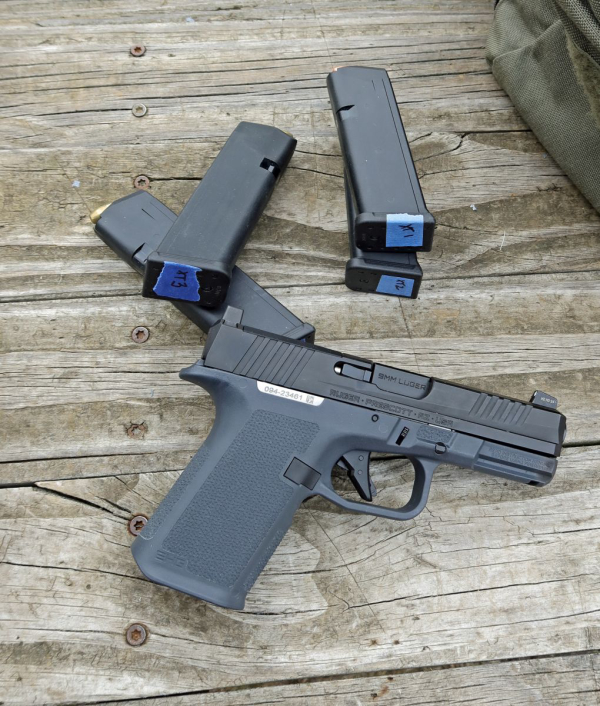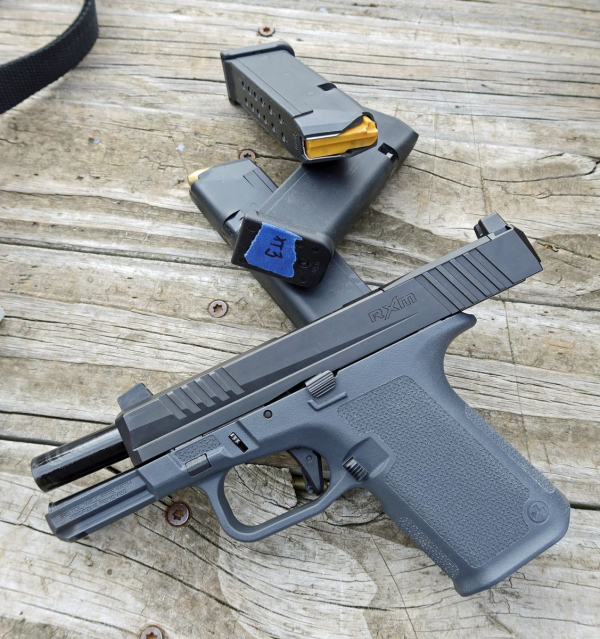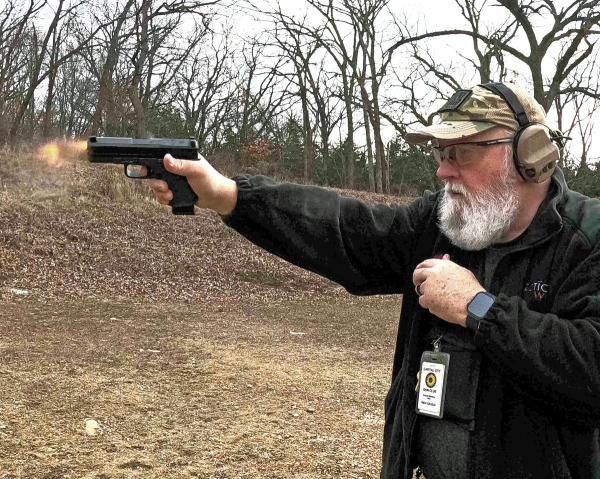Editor’s Notebook: New Mags in a New Gun
Back in December in this issue, I discussed the new aftermarket magazines configured for GLOCK pistols (and any firearm that takes that magazine format) from XTech Tactical. They announced the standard and extended capacity Glock compatible magazines in November.


At that time, I’d just gotten mine. I found that they fit, lock open and drop free from real, original GLOCK pistols and the Ruger RXM, which hadn’t been announced at that point.
These are steel reinforced polymer magazines that look suspiciously “Glock-ish,” and they are nicely finished. The MAG17-17 is the standard G17 size and the MAG19-15 fits the G19-class firearms. With an individual price (at that time) of around $25, these aren’t cheap range magazines. The firm reported that they use a proprietary Delrin-blend “no-stick” follower, an enhanced baseplate with side cuts for extraction (if needed), steel-reinforced body and a 17-17 stainless magazine spring.
When I tried to first load them to capacity, that was an enormous effort. I used the UpLULA to get them topped off. I noted some rattling of the rounds in the stack, but that stopped when the mags were loaded to capacity.
Even with the UpLULA, I had to stop on round 14 (G19) and round 16 (G17) to smack the base pad of the magazine into my hand to get the stack settled enough to load the last round.
I let all the magazines sit loaded until Friday, 7 February. On that date, I was finally able to make it to the club range. Here’s what happened.

I elected to shoot the loaded magazines using the Ruger RXM sample from the end of 2024. I didn’t just shoot mag dumps, putting every round on target, in a timely fashion. It seemed important to me that I should continue to learn the gun and manage skills while testing the reliability of the magazines.
One magazine was loaded with old stock Remington 115gr. JHP from the old days. The remaining three magazines were topped off with old Cor-Bon Performance Match 147gr. flat-point ball.
I marked the floorplate of each magazine with painter’s tape and labeled them by number: the fifteen round (G19) magazines were XT1 and XT2, while the full-size magazines were XT3 and XT4. In this way I could track any issues.
The first thing I tried was an in-battery load. That was not just a press-and-click. The fifteen-round magazine (XT1) apparently had little in the way of room to further compress when the mag was topped off then seated into a gun that’s in battery.
Racking the action would tell if this was a problem; it wasn’t.
The first order of business was shooting two-hands – first left, then right – followed by shooting one-handed, first right, then left.
This was followed by singles, pairs and threes, each of these strings fired from fifteen yards on an NRA B-8 repair center.

I shot more from the stable ICE-Qual bent arm position, shooting a single, then pair, then three, all into the B-8.
I moved to shooting one-handed again and got a stoppage – fail to go into battery – on the last magazine. Taking a little pressure off the slide then releasing it caused the round to chamber. It fired. I finished by shooting the gun on its side, first canted left, then right. There were no further stoppages.
Now I had to refill those magazines.
They seemed to be a bit easier to top off – but still required the “mag slam” to seat the stack before loading the last round. I did note the part-loaded magazines had rounds rattling in the mag body. I don’t notice that so much with OEM magazines.
These are wonderfully finished and appear well made. So far, they work well.
The test will continue.
— Rich Grassi